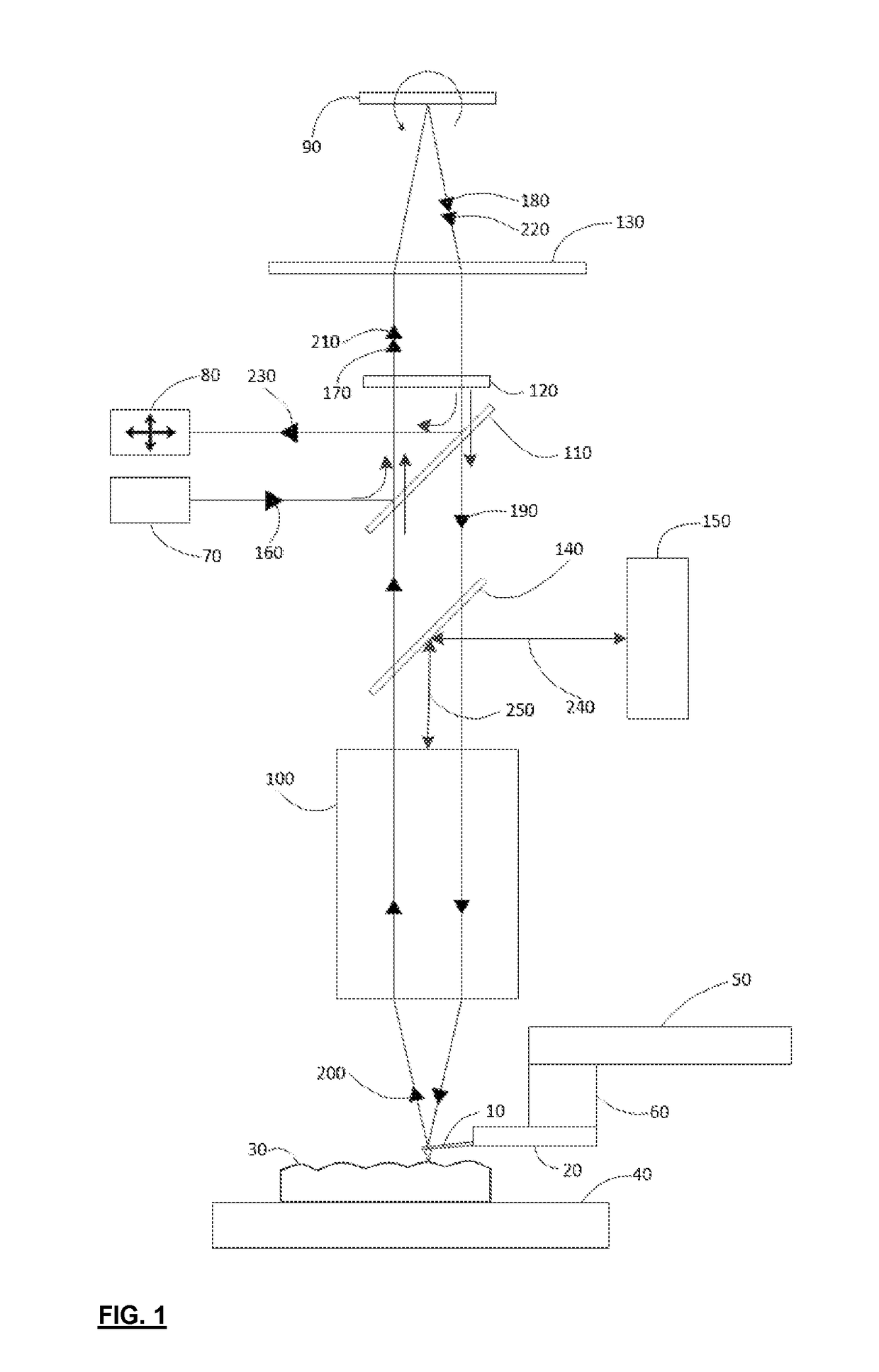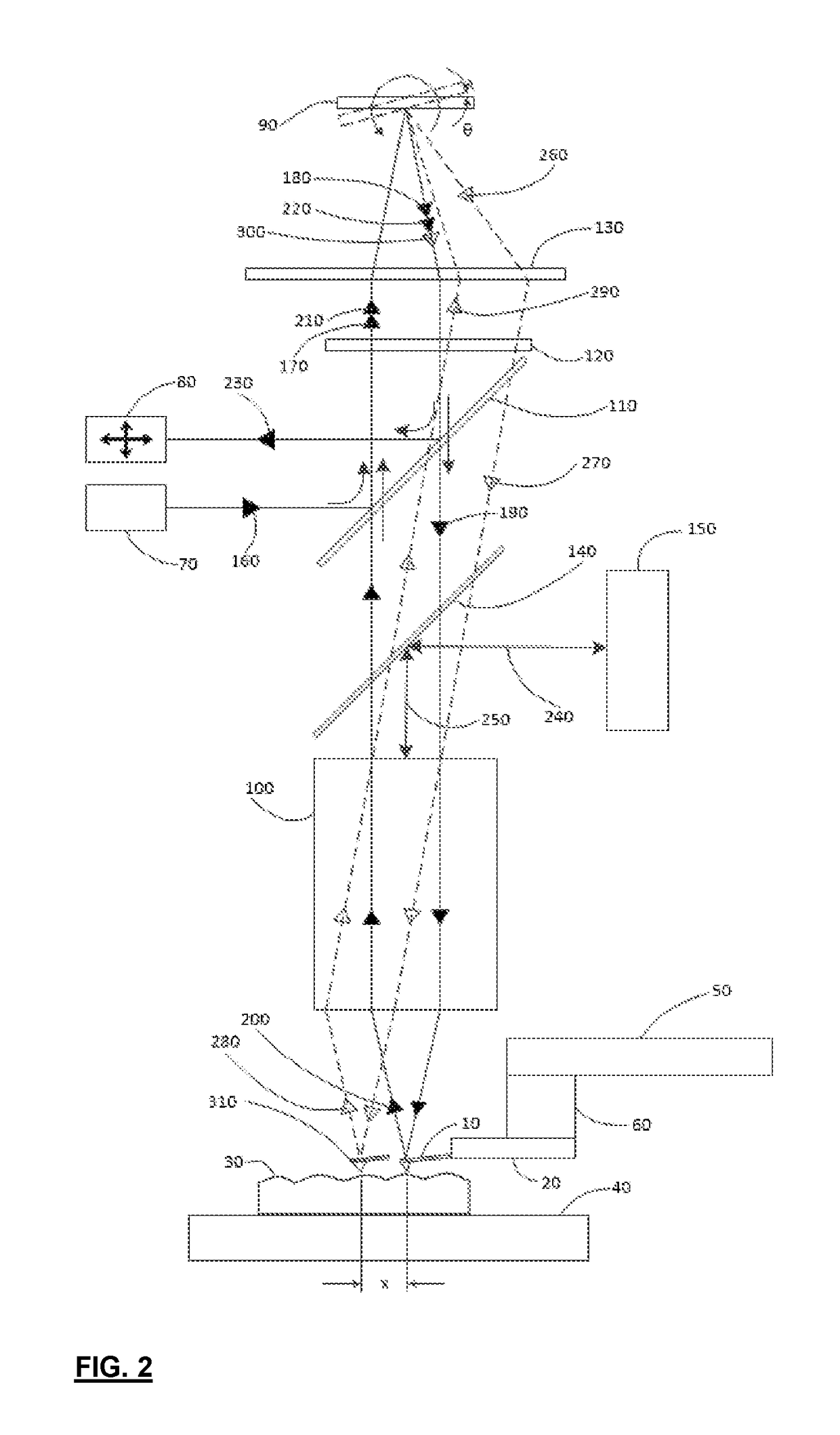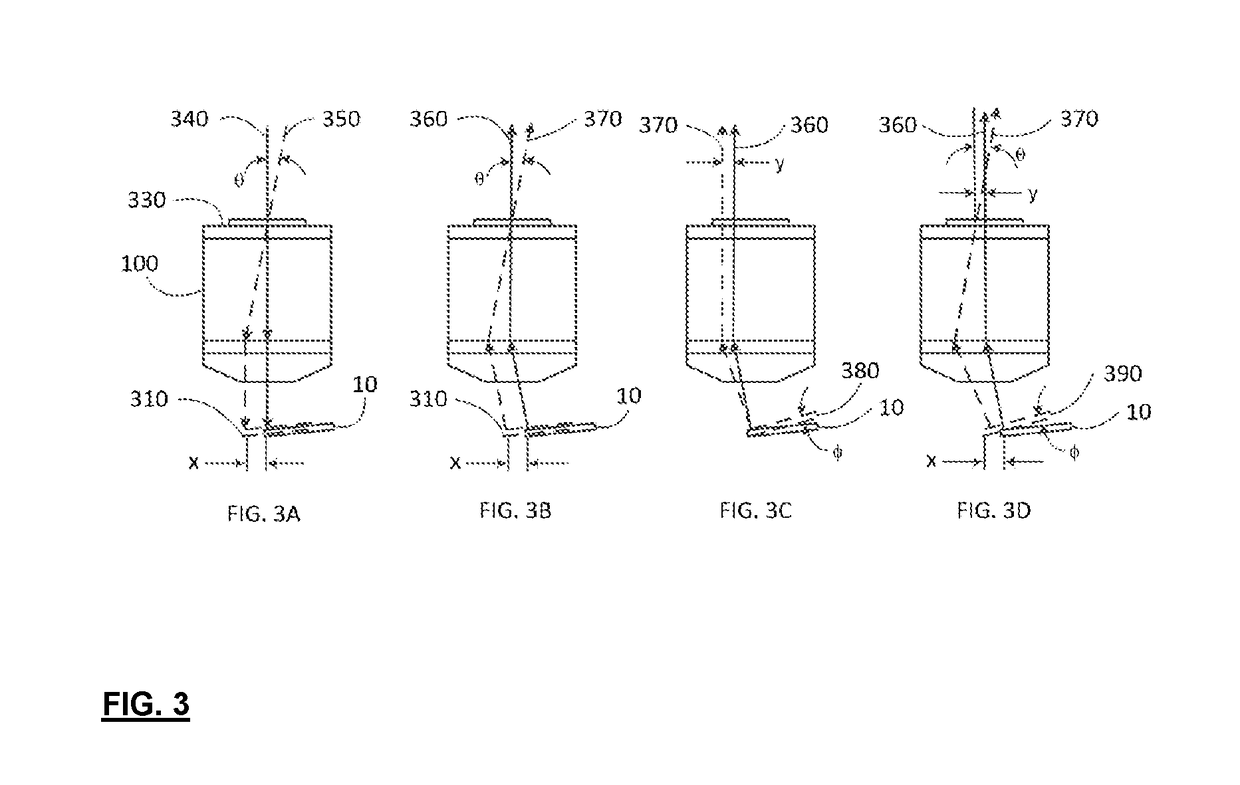Scanning probe microscope
a scanning probe and microscope technology, applied in the field of scanning probe microscopes, can solve the problems of unsuitable sample scanning, unsatisfactory scanning effect, and inability to achieve the effect of reducing interdependence and maximising the benefits of design
- Summary
- Abstract
- Description
- Claims
- Application Information
AI Technical Summary
Benefits of technology
Problems solved by technology
Method used
Image
Examples
first embodiment
[0039]FIG. 1 shows an overall diagram of the present invention. The Probe 10 is attached to and carried by a Probe Holder 20. To perform measurements and move Probe 10 relative to the Sample 30, the Probe 10 and Probe Holder 20 are scanned relative to the Sample 30 in one or more orthogonal directions, namely in the X and Y directions that are parallel to the plane of the Sample 30 surface by the XY Scanner 50 and in the Z direction that is normal to the Sample 30 surface by the Z Scanner 60. The XY Scanner 50 moves the probe in the X and Y directions and the Z Scanner 60 moves the probe in the Z direction. The Sample 30 is supported by a Sample Support Structure 40, a form of sample holder, which may consist of a means to move the sample over larger distances than otherwise provided by the XY Scanner 50 and the Z Scanner 60 for the purposes of performing measurements at different locations on the Sample 30. Neither item 70 thru 150 discussed below are carried by the XY Scanner 50 o...
second embodiment
[0051]FIG. 5 shows a second embodiment where the Beam Steering Device 90 is reflected upon only one time as the beams travel from the Light Source 70 to the PSD 80. This configuration is referred to as a “single-pass” configuration. In this “single-pass” configuration, the PSD 80 is located on the opposite side of the Beam Splitter 110 from the Light Source 70. As in FIG. 1 and FIG. 2, the path taken from the Light Source 70 to the Probe 10 is generally the same, however upon reflection from the Probe 10 beam 200 is again collected by the Objective 100. It passes through the Top View Beam Splitter 140 however then reflects from the Beam Splitter 110 to follow path 410 towards the PSD 80. Because the reflected beam 200 is not “de-scanned” by returning through the Beam Steering Device 90 a second time, it is advantageous to add Focus Lens 400 that projects the Back Focal Plane (BFP) of the Objective 100 onto the PSD 80. The PSD 80 is optically located to remain sensitive to the positi...
third embodiment
[0052]FIG. 6 is a diagram showing a third embodiment where there are two separate telescope lens systems 130 and 500. This configuration is absent the Beam Splitter 110 of the previous embodiments and does not require polarization dependent components, as described in the previous embodiments. However this configuration has other added complications such as off-axis angle coupling particularly as the Beam Steering Device 90 scans in the out-of-plane Y direction. This can occur due to the overall larger average reflecting angle at the Beam Steering Device 90 as compared to the almost normal angles realized in the preferred embodiment shown in FIG. 1 and FIG. 2. The beams reflect from the Beam Steering Device 90 two times, as in the preferred embodiment, however the overall angle of the Beam Steering Device 90 is closer to 45 degrees to the system, therefore this embodiment is referred to as the “45-degree dual-pass” configuration. The Light Source 70 generates a beam 160. A Lens Syst...
PUM
 Login to View More
Login to View More Abstract
Description
Claims
Application Information
 Login to View More
Login to View More - R&D
- Intellectual Property
- Life Sciences
- Materials
- Tech Scout
- Unparalleled Data Quality
- Higher Quality Content
- 60% Fewer Hallucinations
Browse by: Latest US Patents, China's latest patents, Technical Efficacy Thesaurus, Application Domain, Technology Topic, Popular Technical Reports.
© 2025 PatSnap. All rights reserved.Legal|Privacy policy|Modern Slavery Act Transparency Statement|Sitemap|About US| Contact US: help@patsnap.com



